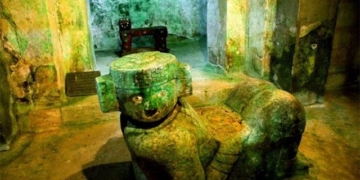Experts believe that ancient hyenas were much more aggressive than modern hyenas, and Dinocrocuta is no exception.
Hyenas are among the animal species that, once seen, are unforgettable for a lifetime. Contrary to popular belief, hyenas are not merely scavengers that steal from other predators; they are also among the smartest species on the planet. They possess the strongest bite force among all existing animals on Earth. Not only do they inhabit Africa, but hyenas can also be found in various regions such as the Middle East and Eurasia.
Currently, only four species of hyenas remain on our planet, yet these animals may have lived on Earth millions of years ago. Like most animals with ancient ancestors, modern hyenas share few similarities with their forebears.
Ancient hyenas were significantly larger than their modern counterparts, and some were even considered more ferocious. These prehistoric hyenas were nearly fearless and could hunt animals weighing nearly double their own body weight or even more.
In this article, we will explore one such ancient hyena known as Dinocrocuta, which has notable differences from modern hyenas.
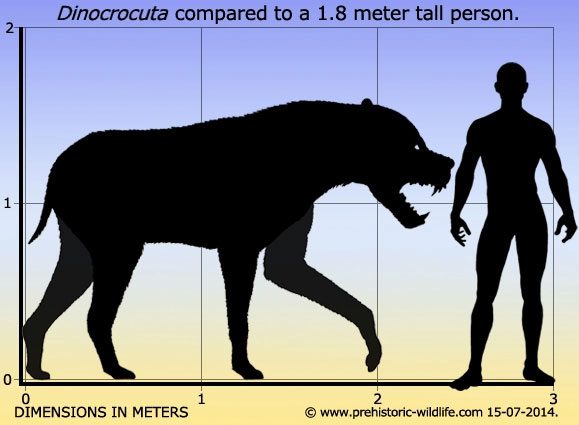
Comparison of Dinocrocuta size with humans.
As mentioned, ancient hyenas are believed by experts to be much more aggressive than modern hyenas, and Dinocrocuta is no exception. The term Dinocrocuta translates to “terrible hyena”, with “dino” indicating terror and “crocuta” being the genus name. Experts believe these hyenas evolved over time to adapt to Earth’s changing environments, which is why they appear so different from modern ones.
Dinocrocuta has several subspecies, the largest of which is Dinocrocuta gigantea. True to its name, this hyena is quite large – it reaches nearly 2 meters in length and about 1.5 meters at the shoulder. These animals also weigh over 300 kg. While not all Dinocrocuta subspecies are well-documented, it is believed that not all of them were as large as Dinocrocuta gigantea. However, experts also believe that the smallest subspecies would still be larger than modern hyenas.
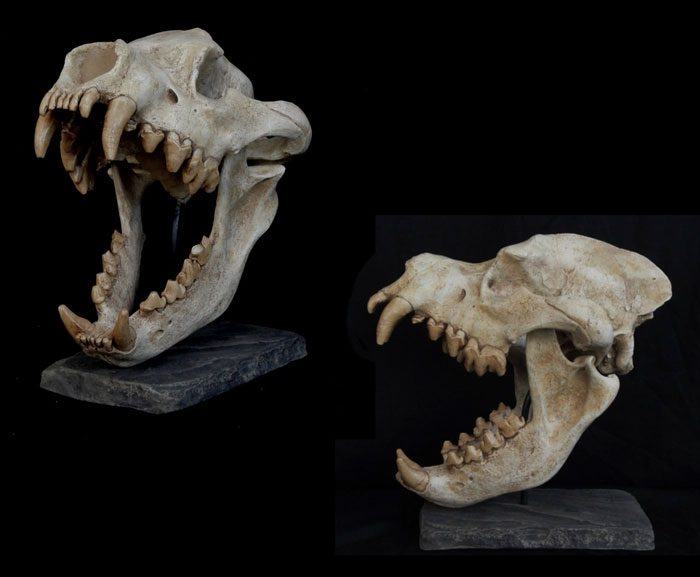
The skull of this species is quite large.
Aside from their gigantic size, these hyenas are easily recognizable due to their large skulls. Their massive skulls allow for powerful jaws capable of tearing apart the limbs of other animals. Structural analysis of their bones and muscle reconstruction suggest that their bites could easily crush the bones of their prey.
Despite their hyena-like appearance, Dinocrocuta is classified within the family Percrocutidae. Members of this family are distinguished by their enormous skulls and powerful jaws. However, due to some physical similarities with modern hyenas, these animals are still grouped with modern hyenas.
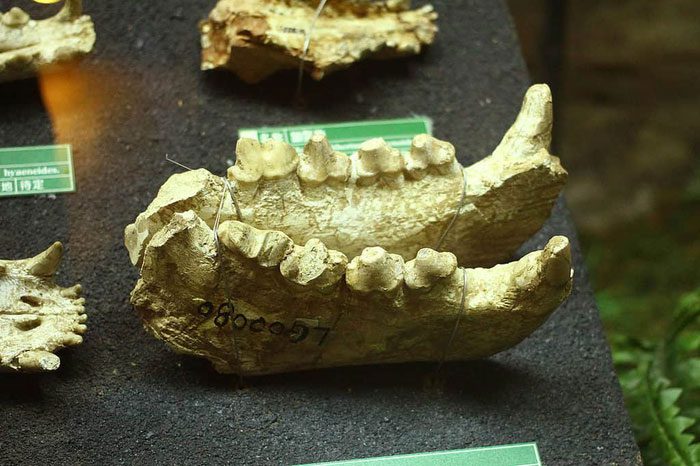
Fossils of this species have been found in various regions of Asia and Africa.
According to paleontologists, these animals primarily lived on the Eurasian continent and parts of Africa. They are believed to have existed during the Miocene Epoch, around 4.5 million years ago. Fossils have been discovered in several regions of Asia and Africa.
Based on results obtained from analyzing fossils of these animals, it has been concluded that different Dinocrocuta subspecies would inhabit different territorial areas.
For instance, Dinocrocuta gigantea lived in Spain and parts of China. This species may also be found in areas between these two countries, such as Turkey, Greece, Bulgaria, and Mongolia. Other subspecies of this animal may be found in North Africa and parts of the Tibetan region.
The first fossil of this species was found as just a piece of jawbone and was officially described for the first time in 1903. However, the most famous fossil discovery of this species occurred in 1986 after an excavation in Shaanxi, China.
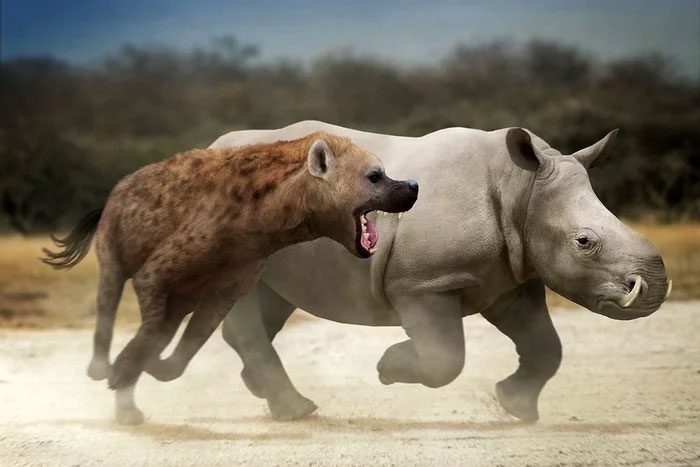
Dinocrocuta may also have been a scavenger and opportunistic predator like modern hyenas.
Like modern hyenas, they were also carnivorous animals, sometimes preferring to pursue prey much larger than themselves. Moreover, the powerful jaws and canines of this species indicate they were strong enough to kill large creatures on their own. The teeth of Dinocrocuta are conical in shape, which would help them gnaw and crush hard materials like bones.
However, to date, researchers have not been able to determine whether Dinocrocuta had a pack-living habit or preferred to live solitary lives. What is certain is that they were skilled predators, often preying on creatures such as the rhinoceros known as Chilotherium.
From fossil analyses in geological strata, archaeologists have found evidence of bite marks caused by this species on the fossils of horned rhinoceroses. Dinocrocuta may also have been a scavenger and opportunistic predator like modern hyenas, meaning they could have challenged other carnivores and stolen their prey.
















































